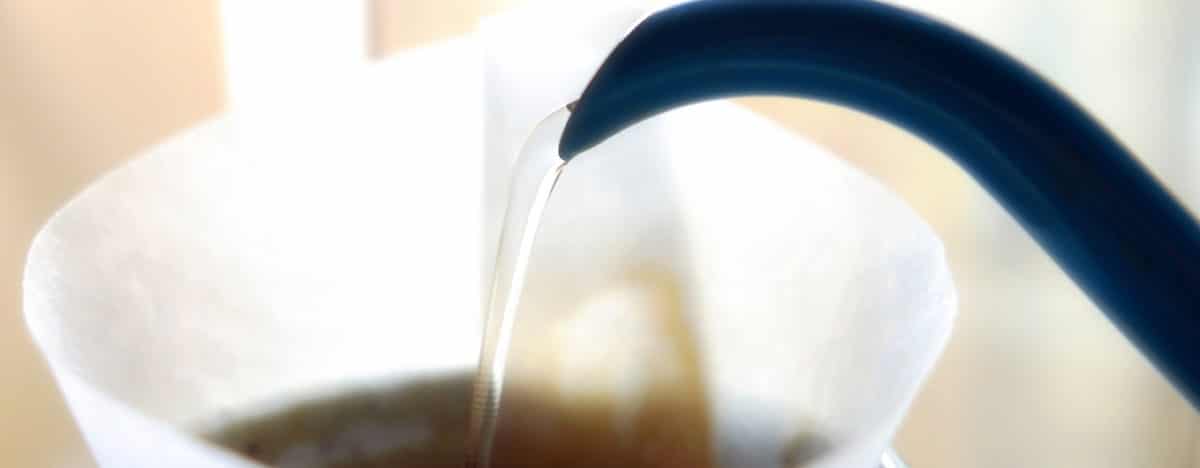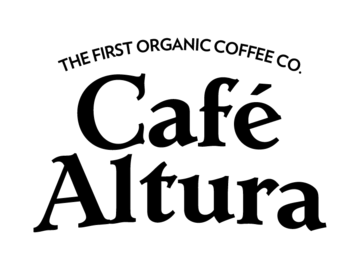
Brewing + Water Composition
When you gaze into the beautiful brown liquid a coffee mug contains, it’s easy to think that most of what you’re looking at is matter extracted from ground coffee beans in the brewing process; brewed coffee maintains the color, aroma, and delicious flavor of coffee beans after all. The appearance of a cup of coffee is, however, quite deceptive. Indeed, on average, a cup of coffee contains only 1.5% coffee solids. The other 98.5%? Water. If you’re a little surprised, don’t worry; this blog post will explain why the water you use to brew coffee matters, as well as some suggestions on how to improve your brewing water at home.
The basics
Before we get into specifics about water, a brief primer on what coffee brewing actually is will be helpful in illustrating some points further on. At a very basic level, brewed coffee is a solution which results from combining ground coffee beans and hot water. In this interaction, the coffee beans operate as a solute, or substance which is dissolved to create a solution, and hot water acts as a solvent, or the substance used to dissolve the solute. The hot water, by way of its temperature and movement through the ground coffee, dissolves solids contained within that coffee. These solids are what give the resulting solution of brewed coffee its aroma and flavor, and thus their proper extraction is necessary for a good cup.
A simple tip which has helped me understand coffee brewing better is that you can’t consider making coffee as a process which is separate from the world of food preparation. Rather, you must think about brewing coffee the same way you would execute any recipe; that is, brewing coffee requires good ingredients and a meticulous process to perform deliciously and consistently, just like any culinary activity. Brewed coffee’s ingredients are ground coffee and water. Ground coffee is the ingredient we fixate on most, and understandably so; it has a very clear and discernible effect on a given cup of coffee’s flavor. However, as that 98.5% figure above demonstrates, water is a pretty important element of the equation as well. Without good brewing water, the coffee you brew with matters less, but with good brewing water, all the lovely nuances of a coffee can shine.
What makes for good brewing water?
Obviously, the preceding claim invites a very practical follow-up question; what makes good brewing water good? The answer to that question can get very jargon-filled very quickly, but I’ll spare you the technical language and quote straight from the Specialty Coffee Association’s guidelines; good brewing water has no odor, no color, is chlorine free, and has a TDS (Total Dissolved Solids-the measure of how much mineral material is in a solution) of between 75 and 250 mg/L. The first three factors in that list are self-explanatory; water which has no odor, color, or chlorine is largely flavorless, which is perfect for dissolving flavorful coffee solids into. The last bit about TDS, though, probably sounds a little abstract. Upon investigation, however, it’s quite concrete and simple.
Basically, the lower TDS rating a sample of water has, the purer it is; in other words, less minerals means water which is composed primarily of water molecules and little else. The most commonly encountered example of low TDS water is reverse osmosis (RO) water. RO water uses a filtering process to remove essentially all mineral content from water, which is great for certain applications, such as washing cars, but not so great for making coffee. This is because minerals trap coffee solids during the brewing process. If there is a very low TDS in a sample of water used to brew coffee, it will not trap enough coffee solids as it passes through the ground coffee, and the resulting brew will be under-extracted, causing weak and sour flavor. Therefore, the low limit of the acceptable TDS range is at 75mg/L; some mineral content is necessary to trap coffee solids. On the other end of the spectrum, water with a very high TDS traps too many coffee solids when it passes through ground coffee, which causes the brew to be over-extracted, resulting in bitter and astringent flavor. Therefore, the high TDS limit of 250mg/L exists to prevent coffee from being over-extracted. When paired with delicious coffee beans, brewing water which falls in between these two extremes will almost invariably produce a delicious, properly extracted cup.
Some practical suggestions
Now that we’ve covered why good brewing water matters, I’d like to give you some practical ways to improve your brewing experience. Most people don’t have a TDS meter at home, so it’s tough to ensure that your mineral content is precisely calibrated. Thankfully, there are a few easy steps you can take to make great coffee without fancy equipment.
- Use filtered water whenever possible. If you don’t have access to café quality water, the simplest thing you can do to improve your brewing water is to use a home water filtration system. This need not be an expensive plumbed in filter, though those are great too; a water pitcher with a carbon filter can also do the trick. The main benefit using filtered water confers is that even if its mineral content is outside optimal brewing standards, filtering water removes color, odor, and chlorine, which goes a long way to improving coffee flavor.
- Buy spring water at the store. If you don’t have a filter system or pitcher, the easiest and overall best solution for improving brewing water is to purchase gallon jugs of spring water at the store. Spring water naturally has mineral content which falls in the optimal coffee brewing range described above, in addition to being free of color, odor, and chlorine. It makes for outstanding coffee brewing water and is inexpensive to boot. This is by far the easiest way to improve your coffee brewing water experience.
Though we’ve only just scratched the surface of the myriad ways in which water can affect coffee brewing, it is my hope that this post has given you an effective primer on the importance of water in the preparation of brewed coffee. We’ve gone over the basics of brewing and offered some practical solutions on how to improve your brewing water with little extra effort. Try out our suggestions and let us know what you think!
Article By : Bret Colman, Director of Coffee / Head Roaster, Cafe Altura Organic Coffee
